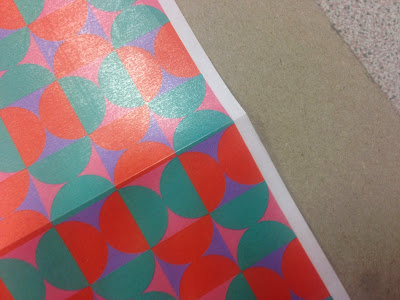Influential colour palettes
Tom and myself collected a broad range of visual research which heavily influenced the visual style of our packaging. We intend to apply a set of brightly coloured patterns to our range of products. Instead of just looking into patterns we sourced visual research that used applied graphics and pattern design in areas of set design and advertising.
Adi Goodrich (work shown below) displays a rich and visual style that contrasts contemporary and post modernist influences in colour, pattern and art direction. She also displays experimentation with food photography which decoractively fuses the foot ware products and the advertising set up together. The colour pallets are also very interesting as she plays around with gradients, pastel colours and examples of clashing pallets which give off a playful and vibrant visual style.
Colour palette
We took influence from the work above and set out to create our own swatch of colours to work from. We intend to stick to the five colours below which will be highlighted in our brand guidelines. We chose these colours because they will appeal to our target audience (which is female 20 -35) plus as a pallet they work very well together.
Patterns
Using the colour swatches above Tom and myself set out to create three patterns each in order to produce a range of versatile and geometrical patterns. The patterns all had to work together along with the main concept of flavour and pasta / noodle shapes.
Noodles : Pumpkin and Ginger
This is a pattern I designed based on the concept of fusing the flavours pumpkin and ginger together. I illustrated this using a geometric pattern made up of triangles. The colour pallet also references the colour of a pumpkin contrasting a pastel pink. Within the various pattern our approach focus on either of two principles, the first principle being to represent the pasta shapes or forms, or like this pattern to visually represent flavour. This pattern uses small triangles in different orientations to reflect to mixing of these two flavours, the triangle itself is also representative of the strong and sharp flavour of ginger.
Pasta : Manfedine
This is a pattern Tom drew based on Manfedine pasta which is a long ribboned pasta with constant curves like the pattern below. Again orange is used to contrast a pastel violet. This pattern is a direct representation of the pasta form itself with is a long piece of pasta with curved rounded edge running down each side.
Pasta : Fusilli
Tom went on to create this very successful pattern that represents the pasta shape Fusilli, a pasta shape that is structured like a long corkscrew. The colours work beautifully with the geometric pattern and constrasts the looser patterns like the Manfedine example above. Furthermore in a more abstract way this pattern reflects the angle of lines within Fusilli pasta to create a repeating pattern.
Pasta : Farfalle
This is a pattern I created based on Farfalle pasta shapes. In a more loose way this pattern also looks to reference the form of Farfalle but in a more simplified and abstract manner.
Pasta : Conchiglie
Within this pattern we used both principle and represented the flavour and form. This is often a pasta that you mixed with sauces and ingredient and we feel this pattern reflects that.
Noodles : Sweet Potato & Buckwheat
Again this pattern is representing the flavours of the pasta, the buckwheat reflected by the small circles mixing with the large pieces of sweet potato. This pattern may need further development, it feel it looks like bacon and carrot.
 Gold foiling / vinyl
Gold foiling / vinyl
The packaging myself and Tom designing for the Nada brand will be high end as will the brand itself therefore we started to explore print possibilities within the patterned element of the brand. We have found during our research that healthy foods are often packaged in a dull and muted manner and really use print finishing techniques and we wanted to change that. We started to look at using gold foiling within the pattern. To explore this we printed our patterns at A3 sizes to both text how the patterns worked printed, as on screen isn't always an accurate representation as well to then experiment with potentially using a gold within the pattern.

After experimenting with this approach we both agreed that this was the successful direction to take with the packaging, we then went back to digital patterns to applying this new thinking to the pattern and ensure this idea would across all of the patterns.
Applying the gold to the patterns
Furthermore after evaluating all of the patterns once we have printed them we felt that one of the pattern simply wasn't working and this was for a number of reasons, it didn't fit within the series that the other patterns created, we felt like it looked like many thing but didn't look like the approach we were trying to achieve therefore we went back to the drawing board with this pattern and developed something new that fit better within the series of patterns.
Developing the patterns
Pattern Casts Off's
We explored and developed a selection of pattern before we chose the above pattern as our final set. Of the many reasons behind not choosing these pattern were mainly that they were either over complicated, or didn't best reflect pasta shapes and forms, or flavours of pasta.




























































